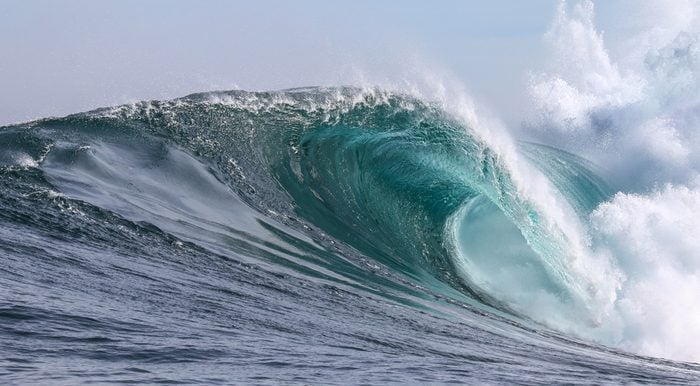Tsunami Warning Signs You Should Know
Updated: Apr. 03, 2021

First, the ocean recedes dramatically from the shore, then the tsunami appears, looking less like a breaking wave than a wall of water.
The Japanese coined the word tsunami to mean “harbor wave.” (“tsu” means harbor, and the character “nami” means wave). In the wake of the Japanese tragedy, remember these tsunami survival tips:
1. A good warning sign of an approaching tsunami is “drawback,” when the ocean recedes drastically or the water level falls unusually along the shoreline. During the 2004 Indian Ocean tsunami, a 10-year-old girl on vacation with her family in Thailand, Tilly Smith, saved the lives of dozens of tourists when she recognized the receding water and frothing bubbles on the surface of the water as a sign that a tsunami was on it’s way. Experts believe that a receding ocean may give people as much as five minutes’ warning to evacuate the area.
2. You’re not out of danger after the first wave of a tsunami. A tsunami occurs as a series of waves known as a “wave train,” and the series of surges can be five minutes or up to an hour apart. The tsunami does not usually appear on the shoreline as a gigantic breaking wave, but rather as a rapid tide or a wall of water. The worst mistake you can make is staying near the beach out of curiosity. Find higher ground and go as far inland as you can. If you can see the waves, you’re still too close.
3. A tsunami surge may be small at one point of the shore and large at another point. Move to higher ground as soon as you can and don’t assume that because there’s minimal activity in the coastal area where you are, it will be like that everywhere else.
4. Keep your ears peeled. Many witnesses have said that a tsunami sounds thunderous, like a freight train.
Source: nationalgeographic.com
